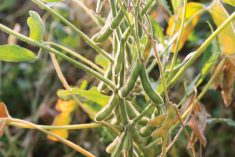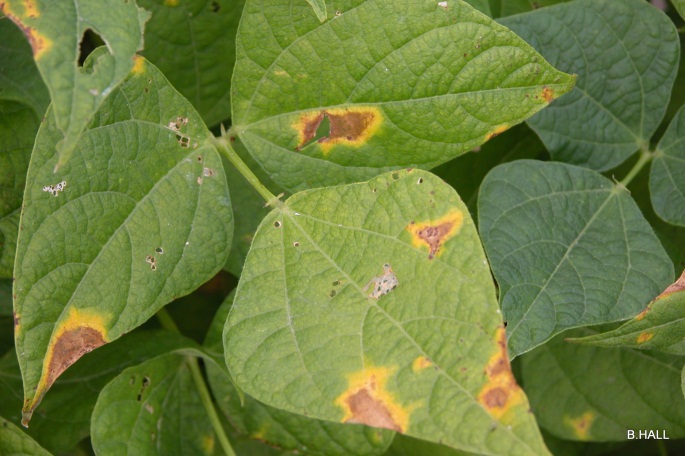The Manitoba Pulse and Soybean Growers is bringing nutritional information into the province’s schools
“It tastes just the same as any other crepe I’ve had,” said a slightly surprised Gage Anderson. “It tastes good.”
Anderson and two dozen other students at Winnipeg’s Elmwood High School made the crepes using chickpea flour last week, as part of a new outreach initiative launched by Manitoba Pulse and Soybean Growers.
In recognition of the International Year of Pulses and armed with facts, humour and sometimes a six-foot-tall kidney bean mascot, the Bean Team has been spreading knowledge and recipes at schools and community events since January.
Read Also

Manitoba sclerotinia picture mixed for 2025
Variations in weather and crop development in this year’s Manitoba canola fields make blanket sclerotinia outlooks hard to pin down
“Usually with the younger kids we don’t cook, but we do bring out Kid Bean,” said Lindsey Andronak, who makes up one-half of the Bean Team and bravely dons the mascot costume when duty calls. “With the older kids we do cooking, recipes, home economics and nutrition classes and we do some science with them too.”
Students are given a look at Canada’s Food Guide and nutritional information before jumping into recipes like lentil-based spaghetti sauce, pinto bean brownies and black bean pizza.
“The end goal is them knowing what a pulse is and also how they can incorporate them into their diet,” said Brandon Clayton, who makes up the other half of the Bean Team. “A lot of time we find that people know what beans are and eat them occasionally, but they don’t know how they can be mixed into other recipes or that they add protein without eating meat, sometimes they don’t connect the dots and we want kids to connect the dots.”
For Elmwood’s foods and nutrition teacher, Leslie Singer, having some fresh faces in the classroom is a great way of keeping students engaged.
“It’s fantastic. They are tired of me going blah, blah, blah, so it’s really helpful and really interesting for them,” said Singer. “We try to introduce them to new things, like quinoa, lentils, and we do veggie burgers… we try to do things that are different for them, that they might not really get at home.”
But with an increasingly international student body, more students are familiar with pulse crops than one might expect. When asked about recipes using lentils, some Elmwood students suggest dhal, while hummus and falafel were put forward as suggested uses for chickpeas.
“It depends on the kid and on the family. We have kids from many different cultures, so some of them are very familiar with pulses and cook with them every day, but for other students it’s quite new,” said Singer.
When the United Nations’ Food and Agriculture Organization declared 2016 as the International Year of Pulses, a large part of the organization’s goal was increased consumption of pulses worldwide.
“So we talked about how we could promote pulses and what we came up with was the idea of a team that could go to schools and talk to kids, and also to community events or groups,” said Francois Labelle, executive director of the Manitoba Pulse and Soybean Growers. “The Bean Team can talk about the benefits of pulse crops and the combination of healthy food, and also that they are good for the environment and for the soil. It’s good for everyone and we wanted to get that story out there.”
While it’s still too early to know exactly how many pulses will be planted in the province this season, the executive director said preliminary indications point to increased acres over last year.
“Peas are being seeded now, some lentils will be seeded next, then after that the edible beans will be seeded behind that. They’re usually not in until the 20th of May or later… but I’d say there will be between 200,000 and 250,000 acres,” he said. “It is going to be up this year. It will be up on peas and lentils and a little down, I would think, on the edible beans.”
The Bean Team will continue making presentations until July, but Labelle said that the Kid Bean mascot will live on for years.
“We just have to find volunteers to wear the costume,” he said.




















